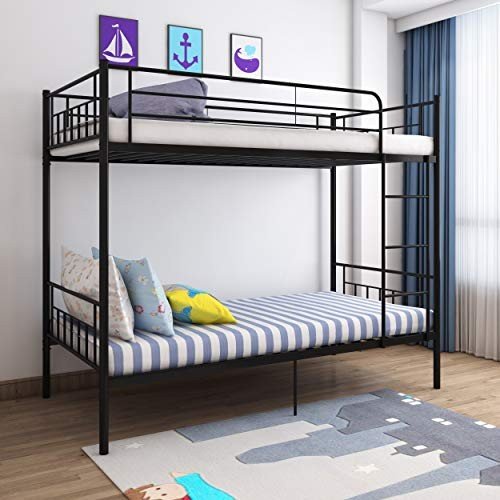Exploring Bunk Beds: A Comprehensive Guide
Bunk beds have long been a staple in children's bedrooms, dormitories, and even homes with restricted space. Not just do they offer a practical sleeping service, however they also produce an enjoyable and imaginative environment for children and a great space-saver for adults and households. This article will check out whatever you need to understand about bunk beds, from types and materials to safety ideas and purchasing advice.
Table of Contents
- Kinds Of Bunk Beds
- Conventional Bunk Beds
- Loft Beds
- Triple Bunk Beds
- L-Shaped Bunk Beds
- Product Options
- Wood
- Metal
- Safety Considerations
- Buying Guide
- Frequently asked questions
Types of Bunk Beds
Bunk beds are available in various designs to fit different needs and preferences. Here's a breakdown of the most typical types:
Conventional Bunk Beds
Standard bunks usually feature two beds stacked vertically on top of one another. These beds are ideal for siblings sharing a room or for making the most of sleeping space in guest rooms.
Loft Beds
Loft beds stand similarly to conventional bunk beds but do not have a lower sleeping area. Instead, they typically include a desk or seating location beneath, making them a great option for little rooms requiring multifunctionality.
Triple Bunk Beds
Triple bunk beds are developed for three residents, with beds stacked in a three-tier setup. These are less common but can be an enjoyable solution for big households or pajama parties.
L-Shaped Bunk Beds
With one bed placed horizontally and the other vertically, L-shaped bunk beds are often equipped with additional features such as desks or storage drawers and can complement corner spaces in a room.
Comparison of Bunk Bed Types
| Bed Type | Ideal Use | Description |
|---|---|---|
| Traditional | Shared bed rooms or guest spaces | 2 beds stacked vertically |
| Loft | Little spaces needing multi-purpose space | Upper bed with open space below |
| Triple | Big households or sleepovers | Three beds stacked vertically |
| L-Shaped | Corner or flexible spaces | A mix of vertical and horizontal beds |
Material Options
Bunk beds are manufactured from numerous products, with wood and metal being the most typical. url has its pros and cons.
Wood
- Sturdiness: Generally robust and can stand up to years of usage.
- Aesthetic Appeal: Offers a timeless appearance that can blend with various decorations.
- Weight Capacity: Typically sturdier; can support much heavier weights.
- Downsides: May be more expensive than metal options and can be vulnerable to scratches.
Metal
- Sturdiness: Generally lightweight and simple to move however still tough.
- Modern Design: Often can be found in sleek styles, making it appealing for contemporary areas.
- Economical: Usually more economical than wooden choices.
- Drawbacks: Can be cold to the touch in winter seasons and may not have the same visual appeal for some purchasers.
Safety Considerations
When it concerns bunk beds, safety can not be ignored. Here are essential security suggestions to bear in mind:
- Guardrails: Ensure that the top bunk has guardrails on both sides to prevent falls.
- Tough Construction: Check for a strong construct and sturdy materials to hold up against weight and movement.
- Weight Limit: Adhere to the maker's weight limit for both the upper and lower bunks.
- Ladder Design: Choose bunks with a safe, easy-to-climb ladder and prevent any sharp edges or rungs.
- Age Restrictions: Most manufacturers advise that kids under the age of 6 must not oversleep the upper bunk.
Purchasing Guide
When shopping for bunk beds, think about the following elements to find the very best suitable for your requirements:
- Space Availability: Measure the space size and ceiling height, making sure there is adequate space for the leading bunk.
- Bed Size: Decide in between twin, complete, or bigger sizes based on your requirements and the size of the room.
- Design Preference: Consider the general decoration of the bed room to discover an appropriate style.
- Relieve of Setup: Look for a bunk bed that is uncomplicated to assemble.
- Budget plan: Bunk beds are available in different cost ranges, so determine a spending plan before beginning your search.
Frequently asked questions
1. What is the advised age for children to sleep on the top bunk?
Kids aged 6 and older are usually suggested to sleep on the leading bunk to decrease the danger of falls.
2. How can I make my bunk bed safer?
To improve security, make sure guardrails are properly set up and examine that the bed is put on a flat surface. Additionally, encourage kids to use the ladder carefully.
3. Can I transform a bunk bed into two different beds?
Many bunk beds are designed to be convertible. Check the maker's specs for convertibility features.
4. What devices are offered for bunk beds?
Common devices consist of beddings, storage drawers, staircases instead of ladders, and tented canopies for a fun visual appeal.
5. How do I preserve my bunk bed?
Regular checks for loose screws or structural stability can help ensure security. Dust the bed regularly and tidy spills immediately to keep the products in good condition.
Bunk beds are flexible and a space-efficient option for various living circumstances, from children's rooms to visitor accommodations. With many styles and products readily available, prospective purchasers have a wealth of alternatives to consider, making sure a mix of functionality and aesthetic appeals. By prioritizing safety and following the ideas described in this guide, people can discover the best bunk bed that matches their space and way of life, all while creating a satisfying sleeping environment.

